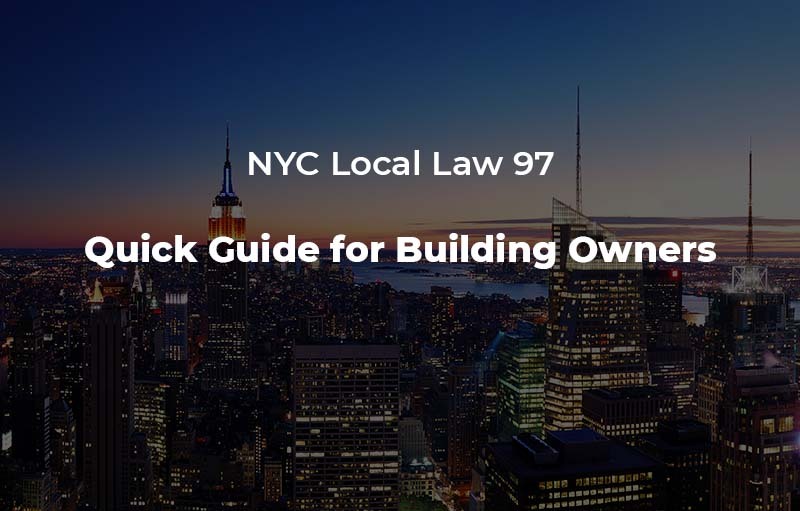
30 Jun Quick Actions For Building Owners To Ensure Compliance with NYC LL97
NYC Local Law 97, enacted by the New York City Council in 2019 sets ambitious emissions limits for buildings and requires building owners to take specific actions to achieve compliance. In this blog post, we will explore the key provisions of NYC Local Law 97 and outline the actions building owners must take to ensure compliance.
Understanding NYC Local Law 97
NYC Local Law 97, also known as the Climate Mobilization Act, aims to significantly reduce greenhouse gas emissions from buildings, which are responsible for nearly 70% of the city’s total emissions. The law establishes emissions caps for buildings larger than 25,000 square feet, including residential, commercial, and institutional structures. It is part of the city’s commitment to achieving carbon neutrality by 2050.
Key Provisions of Local Law 97
Emissions Caps: Local Law 97 sets emission limits based on building occupancy classification and area, measured in carbon dioxide equivalent (CO2e) per square foot. These caps are slated to go into effect in 2024 and will become progressively stricter over time. By 2030, buildings must achieve a 40% emissions reduction from the 2005 baseline, and by 2050, an 80% reduction.
Building Classification: Buildings covered by Local Law 97 are classified based on their occupancy type, including residential, office, institutional, and mixed-use buildings. Each occupancy type has specific emissions caps and compliance requirements. It is essential for building owners to understand the classification of their properties to determine the applicable regulations.
Compliance Timeline: Building owners have a compliance timeline to meet the emissions caps specified in Local Law 97. The first compliance period begins in 2024 and lasts until 2029. After that, subsequent compliance periods occur every ten years until 2050. It is crucial for building owners to plan and implement emission reduction strategies within the given timeframes.
Actions for Building Owners to Ensure Compliance
Energy Efficiency Upgrades: To meet the emissions caps, building owners must invest in energy efficiency measures to reduce their carbon footprint. This may include retrofitting HVAC systems, improving insulation, installing energy-efficient lighting, and upgrading appliances. Conducting energy audits can help identify areas where improvements can be made.
Renewable Energy Integration: Building owners should explore opportunities to incorporate renewable energy sources into their buildings. This could involve installing solar panels, wind turbines, or utilizing geothermal energy systems. Renewable energy can help offset carbon emissions and contribute to compliance with Local Law 97.
Electrification of Systems: Transitioning from fossil fuel-based systems to electric alternatives can significantly reduce emissions. Building owners should consider electrifying heating, cooling, and cooking systems, thereby eliminating the use of natural gas or oil. This transition may require investment in electric heat pumps, induction cooktops, and electric HVAC systems.
Green Roofs and Sustainable Practices: Implementing green roof systems, which involve installing vegetation on rooftops, can help reduce energy consumption and improve air quality. Additionally, building owners can adopt sustainable practices such as rainwater harvesting, waste reduction, and recycling initiatives to further enhance their environmental performance.
Reporting and Compliance Documentation: Building owners must keep accurate records of energy consumption, emissions, and compliance measures. They are required to submit an annual emissions report to the city, which will be audited to ensure compliance. It is essential for building owners to maintain comprehensive documentation to demonstrate their adherence to Local Law 97.
Conclusion
NYC Local Law 97 represents a significant step towards reducing greenhouse gas emissions and combating climate change. Building owners in New York City must familiarize themselves with the provisions of this law and take appropriate actions to achieve compliance. By investing in energy efficiency upgrades, integrating renewable energy sources, electrifying systems, and adopting sustainable practices, building owners can contribute to a greener future and help New York City achieve its ambitious climate goals. Compliance with Local Law 97 not only benefits the environment but also positions building owners for long-term sustainability and cost savings.
For more help on compliance, reach out to us!
